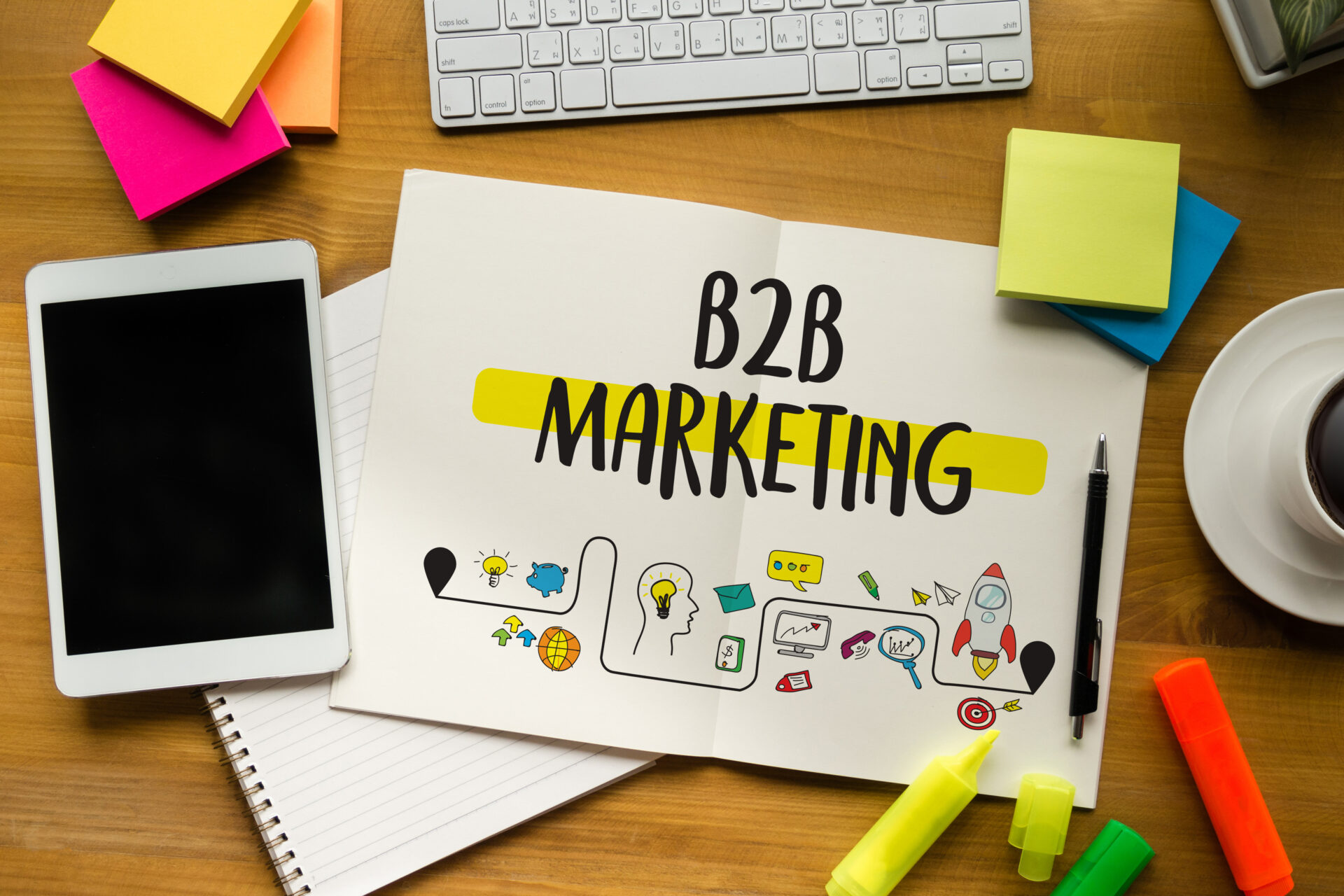
Whether you’re looking to partner with more distributors, wanting to increase your number of commercial clients with small to large fleets, or interested in serving more businesses with the fuel, gas, and oil services and products you offer, your company must enact effective business-to-business (B2B) marketing strategies that capture your target market’s attention.
B2B marketing means creating solid marketing strategies that target businesses, organizations, and other commercial enterprises that would benefit from the products and services you offer. For some, that means raising awareness of their commercial fleet fuel cards and management programs you offer. For others, it means promoting the benefits of becoming a branded distributor of your products. It may even mean capturing the attention of utility companies and distributors who deliver your products to the customers who rely on it.
No matter why you want to gain more commercial customers, you need the right marketing strategies to set your plans into motion and achieve your goals.
Improve your B2B marketing in the gas and oil industry with these tips:
Thoroughly Identify Your Goals, Current Positioning, and Target Market
Every high-quality plan or strategy starts with a deep understanding of why it exists in the first place. When realizing your own “why,” fully analyze these key elements:
Your Goals
Your goal is like the engine that drives you forward. The stronger your engine is, the more powerful your drive will be. In marketing terms, that means your goals should be the force behind your marketing plan. When you know precisely what you want to achieve, you strengthen your plan and add more force to the actions that will complete it.
Take time to define what you want to see for your business and from your marketing efforts. Doing so will clarify so many factors as you put your plan together.
Current Market Positioning
When setting your goals, it’s important to know where you stand in your market or industry. Some questions to ask when determining your position include:
- “What are my company’s “uniques,” or what separates us from our competitors?” You want to identify the value propositions and attributes that draw other businesses in. You also want to lean into the ones customers can receive solely from your company and no one else’s.
- “Which customers do we excel at serving?” This is not to be confused with “What does my ideal client look like?” You could have a vision of serving companies with at least 100 vehicles in their fleet, but you really cater best to companies with 20- to 30-vehicle fleets. Identify who gets the most from you and lean in. You can also use this insight to improve operations so that your ideal client can become your best-served client if that is not yet the case.
- “Where do we stand competitively?” Determine how customers view your offerings—do they believe your products and services are worth the price you charge? Do they view you as a valuable option?—and determine how you rank your own offerings—do you believe your clients receive quite a bang for their buck, or do they receive exactly what they pay for? Are your prices competitive or more costly? By determining your competitive standing, you can better shape your messaging and marketing strategies.
Target Market
Understanding your target market should be a major component of your marketing plan, but it’s often an overlooked or ignored step in the process. Many companies, oil-related or not, will execute marketing strategies without a clear direction for who the recipients should be. It’s easy to believe that if your marketing reaches as many people as possible, you’ll increase your client base significantly.
Unfortunately, that is not the case, especially if your goal is to boost your B2B marketing. Executing your marketing tactics on the general public means you’ll waste much of your budget on people who have no reason or authority to pursue a partnership with your company. Your ad dollars will mostly go toward non-executives or non-decision makers, many of whom do not need the same level of oil-related products or services.
It’s crucial to know who your audience should be, what their pain points are, where you can find them, what their “buyer journey” looks like, and so much more.
For more insight into target audiences, check out this series about buyer personas.
Create a Plan
Once you have exhausted your efforts in detailing the “why” and “for who” of your B2B marketing, the next step is to create your plan, complete with strategies and tactics designed to reach the right people. Let your goals, positioning, and target market guide your planning, strategy creation, and the tactics you’ll use to complete your strategies.
While all plans will look different, here are a few tactics you should consider for reaching your company’s target audience:
Search Engine Optimization
First and foremost, your website and landing pages must be optimized for online searches. Everyone now turns to the internet for everything, and the search journey almost always begins on either Google or Bing. When you implement search engine optimization and optimize your web presence for search algorithms, you increase your likelihood of ranking highly in searches related to your company, products, and services.
For a deep dive into SEO, especially local SEO, check out our Definitive Guide to Local SEO.
Search Engine Marketing
With the right tools, tactics, and techniques, search engine marketing, or SEM, places your name at the top of page #1 on search engines whenever a user conducts a related search. Not only can it instantly change your performance on search engines, but it will also promote your ad on millions of websites connected to the Google and Microsoft display networks. SEM offers customizable targeting options, helping to increase your conversion rates while staying within your budget.
For a deep dive into SEM, check out our Definitive Guide to Search Engine Marketing.
Social Media Management and Advertising
Social media management and social media advertising are two separate beasts that thrive in the same habitat, and both increase your ability to improve your B2B marketing. Millions upon millions of Americans, including operational and executive-level team members, are on social media. Why not reach your ideal points of contact where they are at through an active social media presence and social advertising strategies? For B2B marketing, specifically, the best platform to lean into is LinkedIn, even though Facebook and Instagram are also highly effective at capturing attention and converting leads.
For a deep dive into SMM, check out our Definitive Guide to Social Media Marketing.
ENewsletters
ENewsletters are an outstanding way to communicate directly with your customers and target audience, particularly those audience members who have already expressed interest in your company or the products or services you offer. No matter how someone gets onto your email list, email marketing offers a surefire, can’t-miss opportunity to provide clear, strong messaging that can inspire someone who’s on the fence about your company to pursue your business.
There are many additional advertising options available to your oil company that are designed to capture business-minded audiences and increase the number of customers you serve. So, be sure to explore your options and choose the tactics that align with your goals.
Want to Discover All the B2B Marketing Tactics Available to You? Contact M&R Marketing! 478-621-4491
Our team has served oil companies across the US with marketing plans, strategies, and campaigns. Our business development managers understand the importance of a well-designed marketing plan, and our digital strategists, web developers, graphic designers, copywriters, and project managers are keenly versed in the tactics available to execute your plan and achieve successful outcomes.
If it’s time to improve your B2B marketing, contact one of our business development managers today!
Did you love this article? Make sure you sign up for our monthly eNewsletter, so you never miss one.
Want some profound insight into all things marketing? Check out our Definitive Guide Series for detailed information, tips, and advice regarding:

